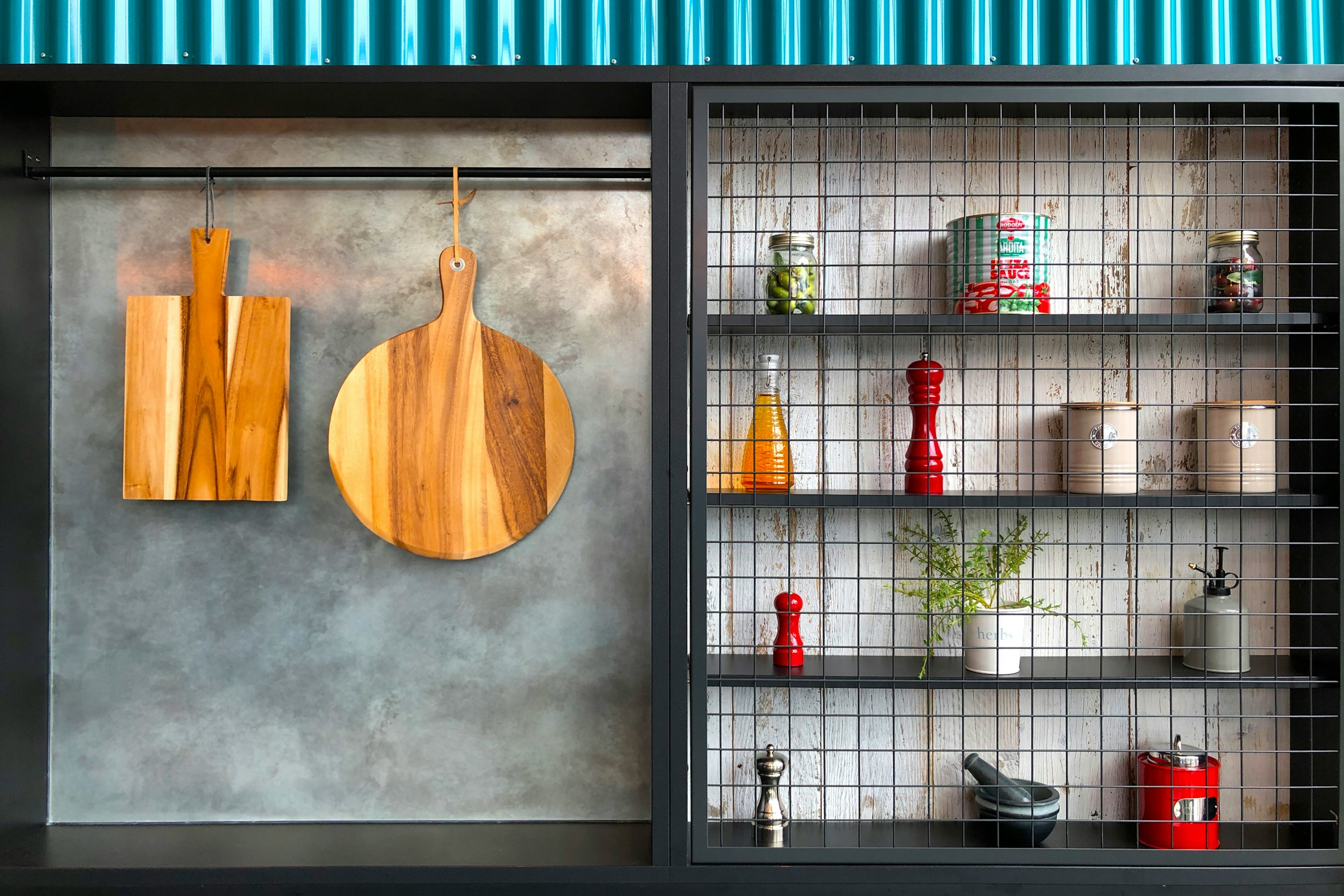Transform Your Kitchen Layout for Maximum Energy Efficiency: Unlock the Secrets to Sustainable Cooking
When it comes to creating a modern and sustainable kitchen, energy efficiency is at the forefront of many homeowners' minds. A well-designed kitchen not only enhances the aesthetic appeal of your home but also contributes significantly to reducing your environmental footprint. Here’s a comprehensive guide on how to transform your kitchen layout for maximum energy efficiency, making your cooking experience both sustainable and enjoyable.
Understanding the Importance of Energy Efficiency in Your Kitchen
Energy efficiency in the kitchen is more than just a trend; it’s a necessity in today’s world. Your kitchen is one of the most energy-intensive areas of your home, with appliances, lighting, and cooking methods all contributing to your overall energy consumption.
Additional reading : Top Mold-Resistant Kitchen Backsplash Materials: Your Ultimate Guide to a Stylish and Safe Space
"Energy-efficient appliances not only reduce your utility bills but also contribute to a more sustainable lifestyle," notes a report from Gehman Remodeling.
To start your journey towards an energy-efficient kitchen, it’s crucial to understand where your energy is being used and how you can optimize it.
Have you seen this : Unlock Culinary Creativity: The Benefits of a Kitchen Garden Window for Your Home Cooking
Choosing Energy-Efficient Appliances
One of the most significant steps in creating an energy-efficient kitchen is selecting the right appliances. Here are some tips to help you make the best choices:
Energy Star Ratings
Look for appliances with high Energy Star ratings. These appliances meet strict energy efficiency guidelines set by the U.S. Environmental Protection Agency and can significantly reduce your energy consumption.
Smart Appliances
Smart appliances are another great option. They allow you to control and monitor your energy use, making it easier to manage and reduce your kitchen’s environmental footprint. For instance, smart refrigerators can optimize their cooling cycles based on your usage patterns, reducing unnecessary energy use.
Water-Saving Appliances
In addition to energy-efficient appliances, consider water-saving fixtures. Low-flow faucets and water-saving dishwashers can significantly reduce your water usage, contributing to a more sustainable kitchen.
Optimizing Your Kitchen Layout
An efficient kitchen layout is key to reducing wasted movement and energy use. Here are some strategies to optimize your kitchen layout:
The Work Triangle
The work triangle concept is a classic in kitchen design. It involves positioning your sink, stove, and refrigerator in a triangular formation to minimize walking distances. This layout reduces the energy expended during cooking and makes the process more efficient.
Layout Optimization
Place your appliances and cooking stations in a way that reduces unnecessary movement. For example, placing the refrigerator near the cooking area can save steps and reduce the energy used in walking back and forth. Similarly, positioning your microwave above the counter or integrating it into a kitchen island can save space and energy.
Incorporating Sustainable Materials and Design
Sustainable materials and design elements can significantly enhance the energy efficiency and eco-friendliness of your kitchen.
Eco-Friendly Materials
Choose materials that are not only beautiful but also have a lower environmental impact. Consider using recycled glass, bamboo, concrete, or reclaimed wood for your countertops. For cabinets, opt for FSC-certified wood or cabinets made from recycled content.
Natural Light and Views
Maximizing natural light and taking advantage of outdoor views are top priorities in modern kitchen design. Large windows, skylights, and glass doors bring in plenty of sunlight, reducing the need for artificial lighting and creating a bright, airy atmosphere.
"Large windows, skylights, and glass doors bring in plenty of sunlight and create a bright, airy atmosphere," explains Decorilla.
Smart and Concealed Kitchens
Smart and concealed kitchen designs are becoming increasingly popular for their sleek, minimalist look and energy-efficient features.
Concealed Kitchens
A concealed kitchen features built-in appliances, flush cabinetry, and appliance garages to keep everything out of sight. This design makes your kitchen feel more spacious and organized, perfect for open-concept living spaces where you want a seamless transition between your kitchen and living areas.
Appliance Garages
Use appliance garages to keep small gadgets out of sight and maintain clutter-free countertops. Sliding or pocket doors can also hide your kitchen when not in use, creating a sleek, modern appearance.
Storage Solutions for an Efficient Kitchen
Efficient storage is crucial for maintaining an organized and energy-efficient kitchen.
Multipurpose Kitchen Islands
Kitchen islands are evolving into multipurpose hubs. Incorporate features like built-in sinks, cooktops, power outlets, and plenty of storage. These islands are perfect for meal prep, casual dining, and even homework or work sessions, making your kitchen more functional and providing extra space for family and friends to gather.
Bigger Pantries
A bigger pantry with adequate storage is a must-have in modern kitchens. Butler pantries and sculleries provide extra space for storing food, small appliances, and kitchen essentials. These separate storage and prep areas keep your main kitchen clutter-free, adding a touch of luxury to your home.
Lighting Solutions for Energy Efficiency
Lighting is another critical aspect of an energy-efficient kitchen.
Natural Lighting
As mentioned earlier, maximizing natural light is essential. However, for times when natural light is insufficient, consider energy-efficient lighting options.
LED Lighting
LED lighting is highly energy-efficient and lasts longer than traditional lighting options. Brass pendants or starburst chandeliers can add a stylish touch while providing efficient lighting.
Practical Tips for a Sustainable Kitchen
Here are some practical tips to make your kitchen more sustainable and energy-efficient:
- Composting System: Set up a composting system to reduce food waste. Composting not only helps the environment but also provides rich soil for your garden.
- Upcycling and Repurposing: Incorporate vintage pieces or repurpose existing materials to create a stylish and sustainable space. This approach reduces waste and adds unique touches to your kitchen.
- Green Cleaning Solutions: Switch to green cleaning solutions. Eco-friendly cleaning products are better for your health and the environment, reducing exposure to harmful chemicals and often packaged in recyclable or biodegradable containers.
Table: Comparing Energy-Efficient Appliances
Here’s a comparative table to help you choose the most energy-efficient appliances for your kitchen:
| Appliance | Traditional Model | Energy-Efficient Model | Energy Savings |
|---|---|---|---|
| Refrigerator | 1200 kWh/year | 800 kWh/year | 33% |
| Dishwasher | 300 kWh/year | 200 kWh/year | 33% |
| Oven | 2000 kWh/year | 1500 kWh/year | 25% |
| Microwave | 200 kWh/year | 100 kWh/year | 50% |
List: Key Features for an Energy-Efficient Kitchen
Here are the key features to consider when designing an energy-efficient kitchen:
- Energy-Efficient Appliances: Choose appliances with high Energy Star ratings.
- Smart Technology: Incorporate smart appliances that can monitor and control energy use.
- Sustainable Materials: Use eco-friendly materials for countertops, cabinets, and flooring.
- Natural Light: Maximize natural light through large windows, skylights, and glass doors.
- Efficient Layout: Optimize your kitchen layout to reduce wasted movement.
- Storage Solutions: Incorporate multipurpose kitchen islands and bigger pantries for efficient storage.
- LED Lighting: Use LED lighting for its energy efficiency and long lifespan.
- Water-Saving Fixtures: Install low-flow faucets and water-saving dishwashers.
- Composting System: Set up a composting system to reduce food waste.
Transforming your kitchen into an energy-efficient space is not just about saving money on your utility bills; it’s about creating a sustainable and modern living environment. By choosing the right appliances, optimizing your kitchen layout, incorporating sustainable materials, and utilizing efficient lighting and storage solutions, you can make your kitchen a hub of energy efficiency and sustainability.
As you embark on this journey, remember that every small change counts. Whether it’s switching to LED lighting, using eco-friendly materials, or integrating smart technology, each step brings you closer to a more sustainable and efficient kitchen.
In the words of a sustainable kitchen design expert, "Sustainable kitchen design goes beyond materials and appliances. It’s about incorporating practices that reduce waste and promote reuse, creating a space that is both beautiful and environmentally responsible".
By following these guidelines and tips, you can create a kitchen that not only enhances the value of your home but also contributes to a healthier planet. So, start planning your sustainable kitchen today and enjoy the benefits of an energy-efficient and eco-friendly cooking space.






